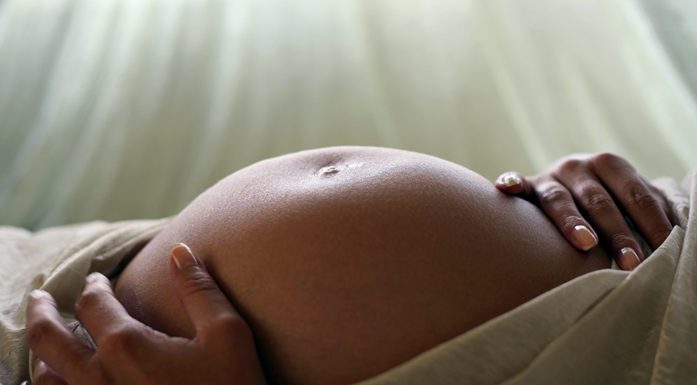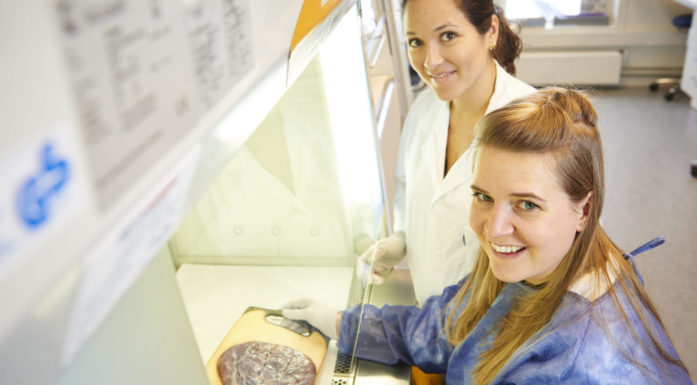Vitamin D deficiency affects many pregnant women
Only one in five women follows the recommendations for taking vitamin D supplements during pregnancy. Vitamin D deficiency can have serious repercussions for the skeletal health of both mother and child.
One in three pregnant women has a vitamin D deficiency at the end of her pregnancy, a study recently published in PLOS ONE has shown.
In the dark winter months, the percentage of pregnant women with a vitamin D deficiency rose to fifty per cent, the researchers found.
“It’s tough to get enough vitamin D from dietary sources, and for six months of the year the sunlight isn’t sufficient at northern latitudes for our skin to make the vitamin. Even though we see the sun, it’s too low for us to produce vitamin D,” says Miriam K Gustafsson, the first author of the study and a PhD candidate at the Norwegian University of Science and Technology’s (NTNU) Department of Public Health and Nursing.
“We’re covering ourselves in sunscreen in the summer to protect our skin and prevent cancer, but this can make it harder for the body to produce enough vitamin D,” she adds. Gustafsson is also a senior consultant at St. Olavs Hospital in Trondheim.
- You may also like: Foetal genes can increase the risk of illness during pregnancy
Important for bone mass
Low vitamin D levels can have serious repercussions for the bone health of both mother and child. Vitamin D is necessary for calcium to be taken up by the intestine. In pregnancy, this vitamin is crucial to ensure sufficient calcium to build the child’s bone mass and maintain that of the mother.
For example, an Australian study has shown a lower bone mass in 20-year old offspring of mothers with vitamin D deficiency during pregnancy.
- You may also like: Exercise prevents gestational diabetes in pregnant obese women
Risk of childhood asthma
Low levels of vitamin D have also been linked to an increased risk of premature birth and an increased risk of asthma in the child. Vitamin D supplements during pregnancy have been shown to reduce the child’s risk of asthma. When the mother has too little vitamin D in her body, the risk of high blood pressure, preeclampsia and gestational diabetes may also increase.

Significantly more women are taking the recommended B vitamin folic acid supplements during pregnancy. Illustration Photo: Colourbox
In other words, there are important reasons for ensuring adequate vitamin D in pregnancy.
However, Gustafsson’s NTNU study shows that fewer than one in five pregnant women followed the Norwegian Directorate of Health recommendations to take vitamin D supplements during pregnancy.
Small measures have positive effects
Gustafsson finds this to be a worrisome statistic.
“I think that taking small actions can lead to better levels of vitamin D in pregnant women. We found that only 18 per cent of the women in our study take the recommended daily allowance of 10 micrograms of vitamin D or a teaspoon of cod liver oil. The results would certainly have been better had more women taken supplements and eaten fish two to three times a week as recommended,” she says.
Vitamin D is a fat-soluble vitamin that is stored in the body, so it is important not to take more than the amount recommended by the authorities or healthcare professionals to avoid an overdose.
However, says Gustafsson, “the greater challenge seems to be that pregnant women are getting too little vitamin D.”
Better at taking folic acid
“A lot more women do take the recommended vitamin B folic acid supplements during pregnancy. Efforts to inform women have certainly contributed to their increased knowledge that folic acid can reduce a child’s risk of spinal cord defects (neural tube defects). I don’t think knowledge about the importance of vitamin D has reached the same level,” she says.
“There are a lot of people who can help get this information out to pregnant women. GPs and midwives see women for pregnancy checks. It’s also important that the information from the health authorities is communicated to the public and health personnel,” the researcher says.
Major study
The study included 855 healthy pregnant women from Trondheim and Stavanger, which makes it an unusually large study. The women’s vitamin D levels were measured twice, once each in the second and third trimester of pregnancy. Ninety-four of the women were not included in the second measurement.
The results show that 34 per cent of women had low levels of vitamin D at their pregnancy’s end. With the wide seasonal variation in sunlight intensity, D vitamin levels were even lower in winter. In the third trimester of pregnancy, 47 per cent of the women from Trondheim and 51 per cent of the women from Stavanger were deficient in the important vitamin. The data in the survey were collected from 2007 to 2009.
“Footprints” from life in the womb
A similar survey of pregnant women was conducted in Sweden a few years ago, which indicated that even more women than in Gustafsson’s study had low vitamin D levels at the end of pregnancy.
Gustafsson adds that other studies have also shown the importance of vitamin D during pregnancy, primarily for the child’s bone growth. In addition to vitamin D levels being associated with increased risks of pregnancy complications, premature birth and asthma in children, recent studies suggest that vitamin D during pregnancy is important in preventing conditions such as cardiovascular disease and osteoporosis later in the child’s life.
“It’s really exciting to be learning more about the kinds of ‘footprints’ that life in the womb leave on the whole life of the child,” says Gustafsson.
Gustafsson’s study was published in the peer-reviewed journal PLOS ONE on April 11, 2018:





